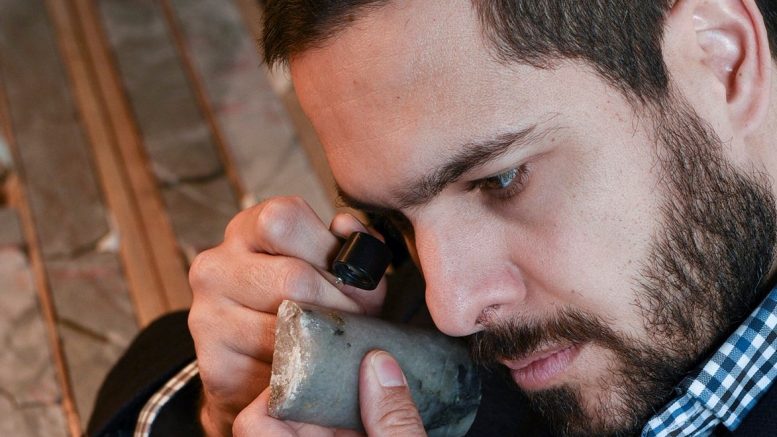Great Bear Resources (TSXV: GBR) continues to make golden strides in its exploration drilling program at one of Canada’s most extensive new gold discoveries in recent years.
President and CEO Chris Taylor tells The Northern Miner the company is nearing the finish line on its marathon drilling campaign. The company has set itself to complete more than 175,000 metres of drilling this year using a fully-funded budget of $45 million.
“We estimated we would need about 400 holes to get that resource drilling done. And we have drilled approximately 375 of those holes as of last week,” says Taylor in an interview.
He expects the program to wrap up shortly. “We should be done this year, for sure. And then it’s just a matter of working on the calculations.
“Different engineering groups are working on that right now. And then there’ll be a resource disclosure early in 2022,” says Taylor.
Great Bear this week gave the market another tantalising glimpse of the high-grade results its drilling program continues to unearth on the LP Fault target at its 100%-owned Dixie gold project in Ontario’s resurging Red Lake mining camp.
With its latest release, Great Bear has published results from 331 LP Fault drill holes, with another 50 drill holes in various stages of completion, ranging from active drilling to being complete and awaiting assays.

Example cross section 20625 showing all individual assays from reported highlighted intervals with labelled high-grade domains in the near-surface, 200 sq.km area of the LP Fault zone. (Credit: Great Bear Resources)
Recent highlights from drilling across the LP Fault Zone include a high-grade intercept of 400 grams per tonne gold over 0.5 metres from 175.5 metres downhole. Importantly, this interval is within the newly defined high-grade domain BR4.
The exploration work also continues to trace bulk-tonnage gold intercepts such as 2.23 grams per tonne gold over 77.4 metres from 69.6 metres downhole, including 5.14 grams per tonne gold over 20.7 metres from 75.3 metres downhole. The drill hole is said to have traversed high-grade domain AURO20.
Other encouraging intercepts include 3.83 grams per tonne over 12.15 metres from 117.5 metres as the drill hole traversed domain BR7.
The company says 11 of the 13 drill holes included in its June 21 press release tested the bulk-tonnage style halo next to the high-grade domains along the more than 2.5 kilometres of strike length. Drilling intersected gold mineralisation from bedrock surface to a vertical depth of 500 metres.
Taylor says the project has progressed from discovery to the pre-resource stage at breakneck speed.
Taylor recalls how he and a handful of other early believers took out a second mortgage on his property to fund the acquisition of a portion of the claims that today constitute Dixie. When the team first mobilised to the site, Taylor says they found boxes upon boxes of stored drill core that had previously not been examined for gold content.
The core was drilled in the Confederation group of rock that was not previously characterised as gold-rich in the Red Lake complex, hence the erroneous interpretation that the sequence of stones was not prospective for gold mineralisation.
“What we found blew our socks off,” he says. “In that pile of core that had been sitting there for more than a decade, we found many occurrences of first low-grade and then high-grade gold. We knew we were on to something.”
The company has since reported multiple gold discoveries along a 3.2-kilometre strike length portion of the about 18-km-long LP Fault target, which transects the property and is hosted in the larger project’s Bear-Rimini Zone.
Taylor says for the first time in a year, Great Bear will conduct follow-up drilling of previously successful reconnaissance holes completed elsewhere along 11 kilometres of the LP Fault. The 2021 exploration plan will also include a systematic extension and infill drilling of the central LP Fault zone, which is ongoing.

Map of current drill results and current and upcoming drill areas at the Dixie project. (Credit: Great Bear Resources)
The regional drilling will include a one-kilometre step-out to the east of the central 4.2-kilometre drill grid. Alongside, deeper drilling of the central LP Fault zone below the about 400 metre vertical depth of the planned resource area will continue into 2022.
Drilling will also restart by fall on the Hinge and Dixie Limb zones.
Covering about 9,140 hectares, the Dixie Lake project comprises a typical Archean mesothermal gold vein system located 20 to 25 km from other significant mines that share the same geological and metallogenic characteristics. These operations include Evolution Mining‘s (ASX: EVN) Red Lake mine, which has been in production since the late 1940s, and PureGold Mining‘s (TSXV: PGM; LSE: PUR) PureGold mine, which recently restarted production following a redevelopment.
Great Bear shares in Toronto have seen some volatile trade in the year to date, and at $14.63 a share, it is down nearly 14% since the New Year. However, that still reflects a 465% increase in value since the excitement started late in 2018. Great Bear has a market capitalisation of $835.89 million, with about 61.3 million shares outstanding on a fully diluted basis.


Be the first to comment on "Dixie maiden resource statement coming early 2022, says Great Bear CEO Chris Taylor"